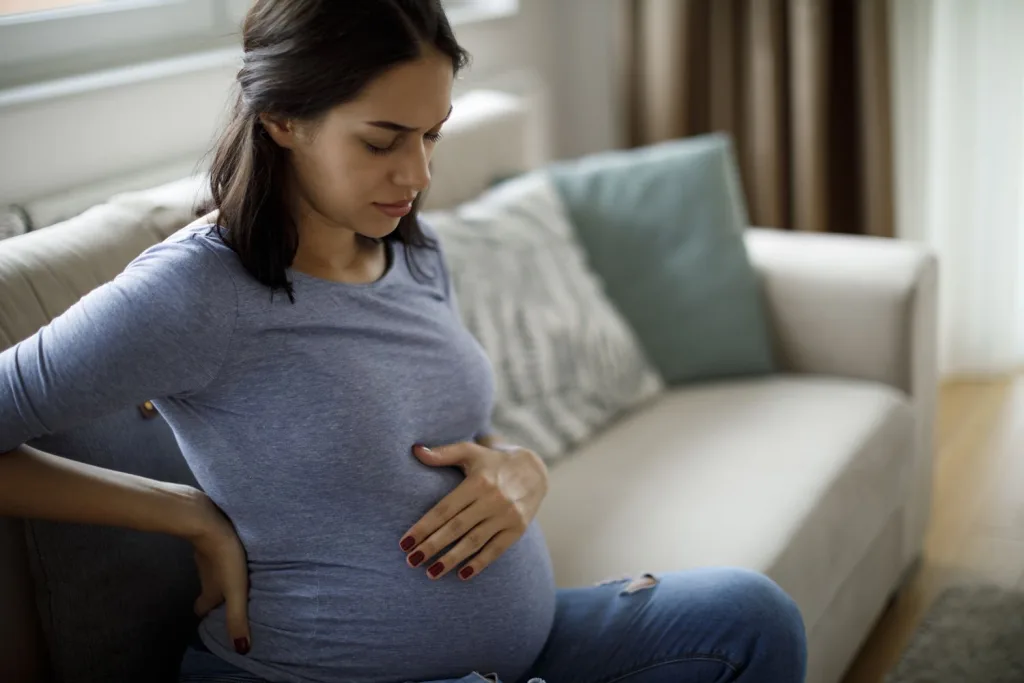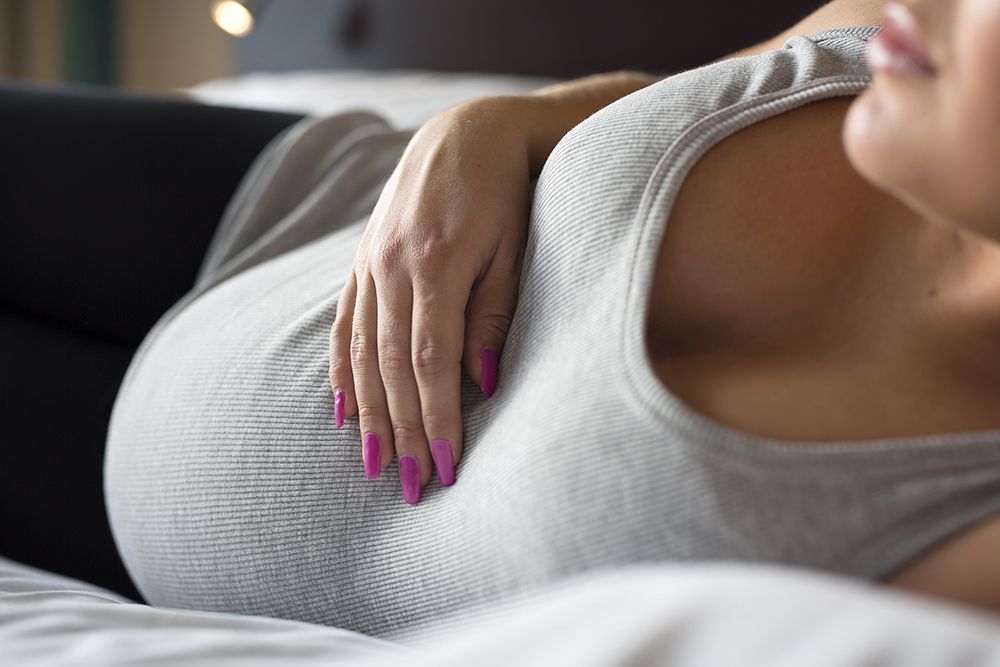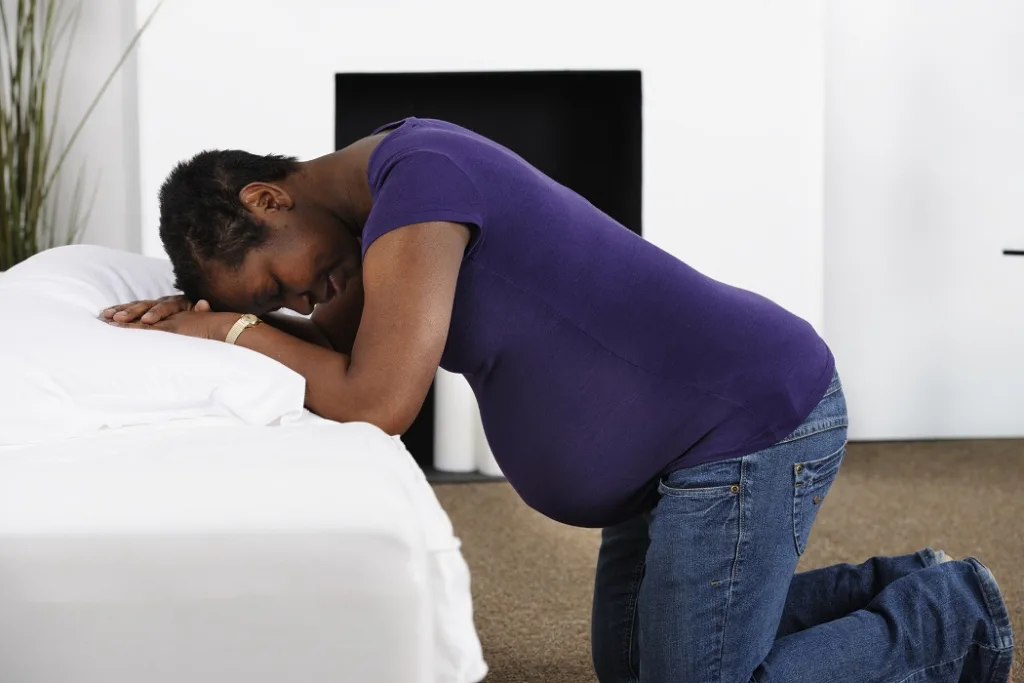We’ve all heard of contractions, but do we really know what they are and how they work? Contractions are tightening and hardening of the uterus that help to push a baby out during labor. Sometimes women experience feeling contractions only on one side. Their bellies will be tight and hard only in one area. This is usually related to the baby moving around. Other women experience what’s known as back labor, when they feel contractions in the back.
So, can contractions be on one side? The answer is yes! Contractions can indeed be felt on just one side of the abdomen or pelvic region. This is usually due to the positioning of the baby within the uterus and can signal that labor is imminent or already underway. It’s important to pay attention to any changes in contractions, as this could indicate that your labor is progressing faster than expected.
The most common type of contraction felt during pregnancy is called Braxton Hicks contractions. These are often irregularly spaced and can be intense at times, although they should never be painful like real labor contractions. Braxton Hicks contractions are often only felt in the front of the abdomen or one specific area and will usually last for between 30 seconds and two minutes before fading away again.
Real labor contractions tend to start off feeling like period pain with a dull lower back ache or pain in your inner thigh that you may feel down your legs too. These will become increasingly more frequent over time until they are around five minutes apart, lasting up to 60 seconds at a time – though some can last even longer!
If you think you may be experiencing regular contractions it’s important to keep track of them by noting down timing and duration as well as any other symptoms you may have such as nausea or diarrhea – this information will help your doctor assess whether you are in actual labor or not!
It’s also important to remember that every woman’s experience with pregnancy and childbirth is unique so if you ever have any concerns or questions about your own pregnancy it’s best to talk with your healthcare provider who will be able to give you tailored advice based on your individual situation.
Can Early Contractions Begin on One Side?
Yes, early contractions can start on one side. This is known as unilateral uterine contractions and is usually caused by the baby moving around in the uterus. It might feel like your belly is tight and hard only on one side. The contractions may be mild or strong, but they are usually intermittent. If you experience unilateral uterine contractions, it is important to contact your healthcare provider to make sure that nothing else is going on.

The Side Effects of Contractions
When you are in labor, contractions are usually felt in the lower back and move to the front of the abdomen. The pain will typically be stronger on one side, depending on which side the baby is facing. During a contraction, you may feel a tightening or hardening of your uterus muscles and an increased pressure in your pelvis. You may also feel pain radiating down your legs or intense pressure in your lower abdomen.
Experiencing Contractions for the First Time
When contractions first start, they typically feel like mild to moderate cramps in the lower abdomen and back. You may also feel pain in your inner thighs that radiates down your legs. At the beginning, contractions tend to be short in duration and spaced out at around 30 minutes apart. Many women report that the sensation of a contraction is similar to that of period cramps, but stronger. As labor progresses and contractions become more frequent and intense, they are often described as feeling like strong pressure or tightening in the lower abdomen.
Can Braxton Hicks Contractions Occur on One Side Only?
Yes, Braxton Hicks contractions can occur on one side of the abdomen only. Some people experience these contractions as a tightening sensation on one side and not the other; however, this is not always the case. Braxton Hicks contractions are generally considered to be a sign that your body is preparing for labor, although they are usually harmless and do not necessarily mean labor is imminent. They may be more intense or frequent in some women than others and can vary from person to person.
The Location of Contractions
Real contractions are usually felt in one spot, but not always. They generally start at the top of the uterus and move through the middle of the uterus to the lower segment in a coordinated fashion. On the other hand, Braxton Hicks contractions usually feel like a tightening or squeezing sensation that is focused in one area of the abdomen, without necessarily traveling throughout the entire uterus like real contractions.

The Effects of Contractions on Side Pain
Yes, contractions can cause pain on the side. Some women may feel a dull ache or discomfort in their sides and thighs, in addition to the lower abdomen and back. This is because during contractions, the muscles of your uterus tighten and put pressure on the nerves that surround your uterus, which can cause discomfort or pain in other areas of your body. If you’re experiencing pain during contractions on the side, it’s important to talk to your doctor or midwife as soon as possible.
The Sensation of False Contractions
False contractions, also known as “Braxton Hicks” contractions, are mild, irregular contractions that can occur during pregnancy. They typically feel like a tightening or cramping in the abdomen; some women may also feel pressure in the lower back. The contraction usually lasts for around 30 seconds and is uncomfortable but not painful. It is common to experience more of these false contractions as you get closer to your due date.
Timing Contractions
When timing contractions, start counting from the beginning of one contraction to the beginning of the next. To do this accurately, it is important to time each contraction from start to finish. Pay attention to when you first feel the tightening sensation and when it begins to ease up. Make sure to count each contraction separately, rather than counting several contractions as one. It is also important to note if there are any changes in intensity or duration between contractions.
What Are the Sensations Associated with Mild Contractions?
Mild contractions usually feel like a tight band around the top of your abdomen, or like a dull ache in your lower back. They may also feel like pressure or cramping in the pelvic area, as if you are having a bowel movement. The sensation can be similar to menstrual cramps, but will often be slightly less intense than period cramps. Generally, mild contractions will come and go, and may last for 30-60 seconds at a time.

Duration of False Labor
False labor, also known as prodromal labor, can last anywhere from a few minutes to several days. It typically starts around the 37th week of pregnancy and can last until active labor begins. False labor involves regular contractions that feel like real labor but don’t result in any cervical change or increased effacement of the cervix. While false labor can be uncomfortable and difficult to differentiate from real labor, it’s important to remember that it is normal and will eventually end with active labor.
When Is It Necessary to Seek Medical Attention for Pregnancy-Related Cramping?
If you are experiencing regular contractions (every four minutes, lasting one minute, and happening for at least one hour) that are accompanied by your water breaking or bright red vaginal bleeding, you should go to the hospital as soon as possible. Additionally, if you have any symptoms of pre-eclampsia such as dizziness, headache, or blurred vision, it is important to seek medical attention right away. It is best to call your provider or go to the nearest labor and delivery unit for further evaluation.
Conclusion
In conclusion, contractions are a normal part of the labor process that can be felt in various places including the lower back, abdomen, and inner thighs. They can range from mild to intense and can be regular or irregular. False labor contractions usually present in the front of the abdomen or pelvic region and are not as intense as true labor contractions. True labor contractions start in the lower back and move to the front of the abdomen. It is important to remember that it is normal to experience some degree of discomfort durng labor and delivery, so if you are feeling any kind of contraction talk to your doctor or midwife to ensure everything is proceeding normally.
